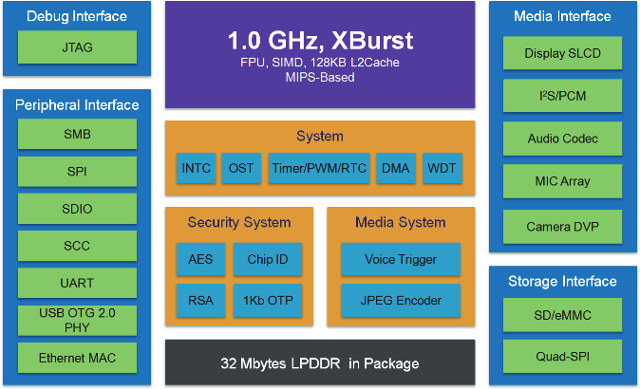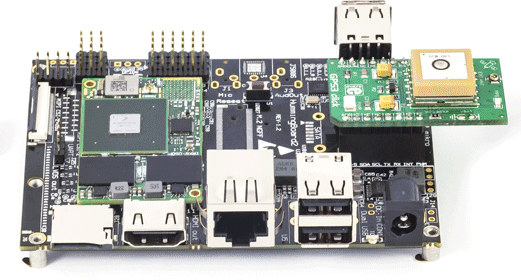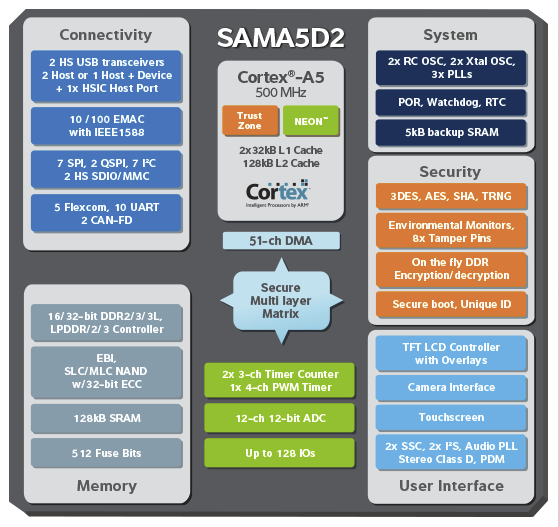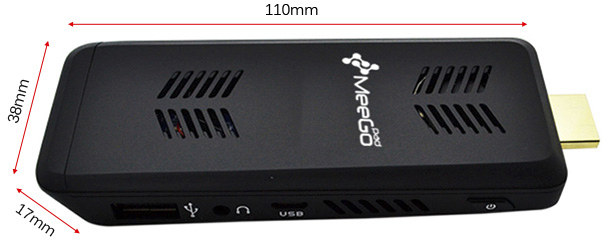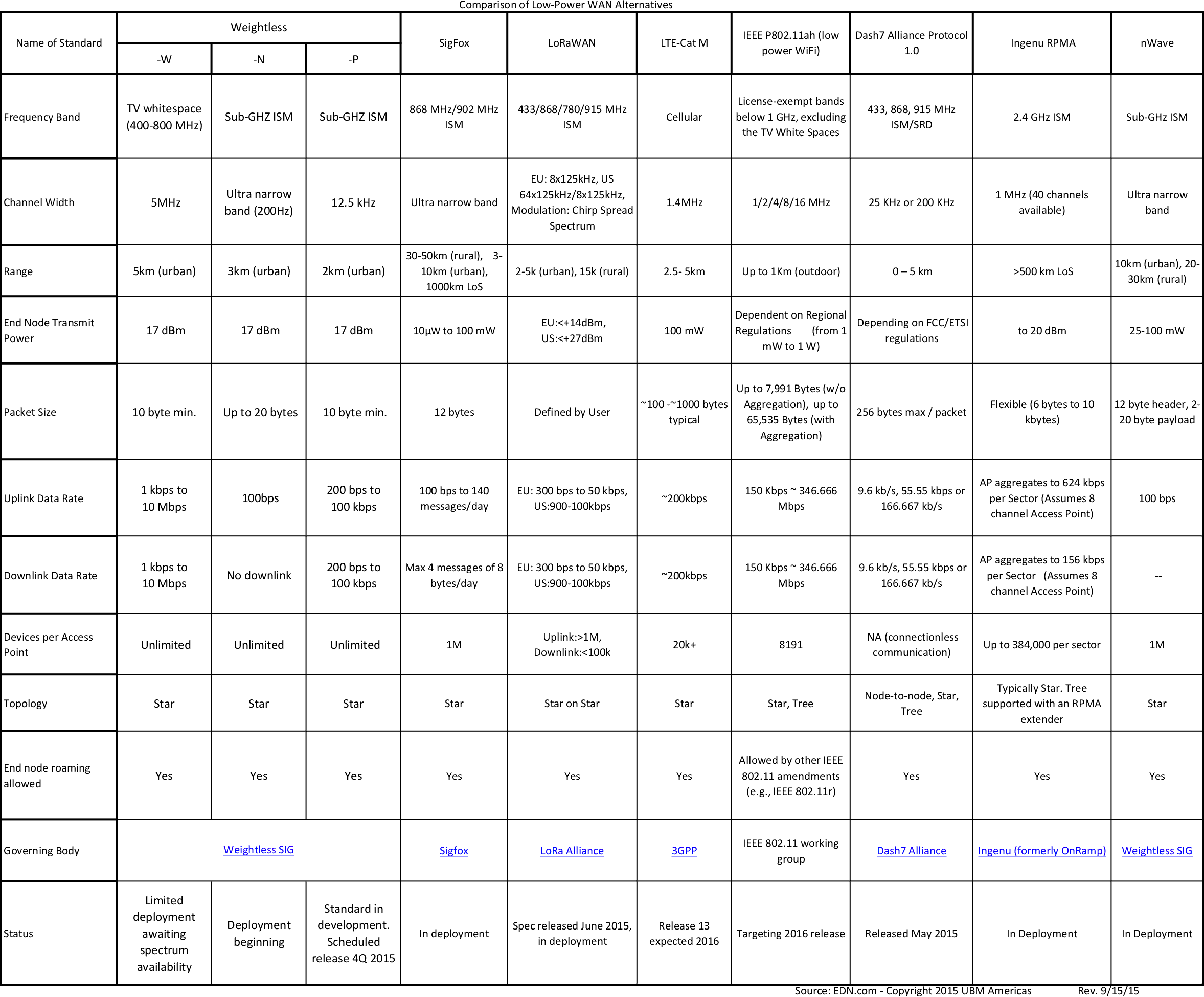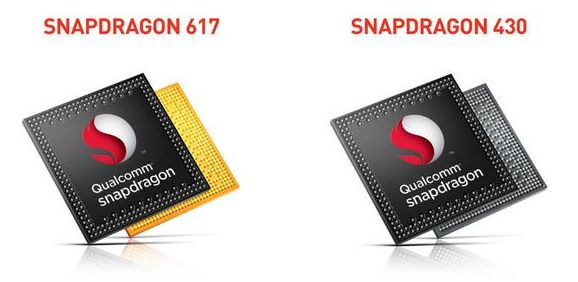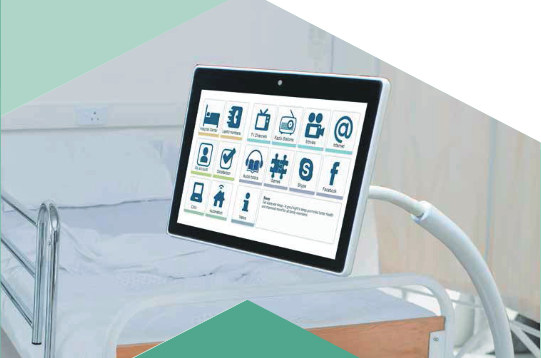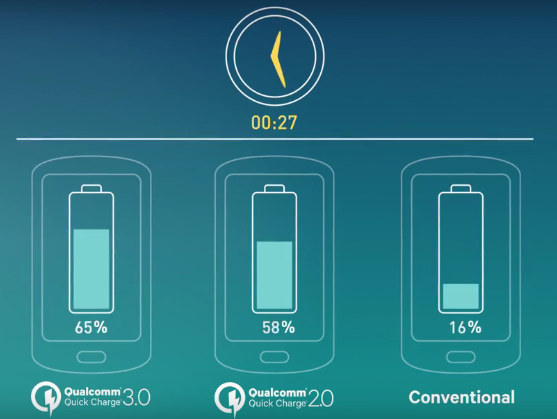Ingenic is a Chinese SoC vendor that makes processors featuring their X-Burst cores based on MIPS architecture. Their JZ47 series can be found in tablets and development boards such a MIPS Creator CI20, while their M series, including Ingenic M200, are dedicated to wearables & IoT applications. The company has now launched X series starting with X1000 processor which include an audio codec, a Voice Trigger Engine (VTE) and 32MB RAM in package. Ingenic X1000 features: CPU Core – Ingenic MIPS XBurst 32-bit core up to 1.0 GHz, Double precision hardware float point unit, L1 cache 16KB/16KB, and L2 cache 128KB Security Core – On-chip security ROM and RAM, hardware AES and RSA, supports security boot and user customization Memory 32MB LPDDR in package Support 16-bit DDR2, DDR3 and LPDDR up to 512MB Support Quad-SPI NOR/NAND, eMMC, SDHC Display – 8-bit, 9-bit, 16-bit parallel interface SLCD up to 640×480@60Hz, 24 […]
HummingBoard Gate Boards Add a mikroBUS Socket to Support MikroElektronika Click Boards
SolidRun already released HummingBoard-Base, HummingBoard-Pro, and HummingBoard Edge previously, but the company has now launched another version of their Freescale i.MX6 based boards with HummingBoard Gate that adds a mikroBUS socket to support over 150 add-on boards – called Click Boards – made by MikroElektronika. HummingBoard Gate specifications: SoC – Freescale i.MX6 Solo, Dual Lite, Dual, or Quad with Cortex-A9 cores @ 1 to 1.2 GHz System Memory – Up to 4GB DDR3 Storage – Micro SD slot Connectivity – Gigabit Ethernet (limited to 470Mbps), optional WiFi/Bt module Video Output – HDMI output, MIPI-DSI connector Camera – MIPI CSI-4, parallel camera USB – 4x USB 2.0 ports Expansion mPCIe slot with SIM card holder 36-pin GPIO header mikroBUS click interface Misc – Reset button, RTC with battery Power – 7-36V, 5.5mm jack Dimensions – 102 x 69 mm As usual, the board is comprised of a baseboard and a microSOM, […]
Atmel Introduces SAMA5D2 Cortex A5 SoC with Extended Temperature Range, Lower Power Consumption
Today, the news broke out that Atmel will be bought by Dialog Semiconductor for about $4.6 billion. The Anglo-German company is little known as their main products are PMIC, audio and connectivity chips, but they’ve still managed to get the financing to purchase Atmel. But that’s not the purpose of the post today, and instead I’ll cover a new SAMA5 Cortex A5 SoC recently announced by the company, targeting industrial Internet of Things, wearables and point of sale applications. SAMA5D2 key features and benefits: ARM Cortex-A5 core running at 500MHz (785DMIPS). Floating point unit (FPU) for high-precision computing and accelerated data processing. 128KB of L2 cache for system performance Low power consumption Less than 150mW in active mode at 500MHz with all peripherals activated Less than 0.5mW in low power mode with SRAM and registers retention Sub 200µA in retention mode with context preserved New backup mode with DDR in […]
MeegoPad T05, T06, T07 HDMI TV Sticks Feature Intel Atom X5 Processors, 2 to 4 GB RAM
Most low cost mini PCs based on Bay Trail or Cherry Trail processor come with only 2GB RAM, which may limit what you can do on such device, and limits multi-tasking abilities. MeegoPad T05 and T06 HDMI sticks will allow you to do more thanks to 4GB RAM connected to a quad core Intel Atom x5-Z8500 a x5-Z8500 processors, while MeegoPad T07 is still limited to 2GB RAM, and features the same x5-Z8300 processor found in Tronsmart Ara X5. MeegoPad T05, T06, T07 preliminary specifications [Update: the specs appear to change daily, see https://plus.google.com/+IanMORRISON/posts/T6MtT6PfVvV]: SoC T05, T06 – Intel Atom x5-Z8500 “Cherry Trail” quad core processor @ 1.44 GHz (Turbo frequency: 2.24 GHz) with Intel Gen8 HD graphics (2W SDP) T07 – Intel Atom x5-Z8300 “Cherry Trail” quad core processor @ 1.44 GHz (Turbo frequency: 1.84 GHz) with Intel Gen8 HD graphics (2W SDP) System Memory – T05, T06: 4GB […]
Comparison Table of Low Power WAN Standards for Industrial Applications
WiFi, Bluetooth and Zigbee are commonly found in consumer devices part of the “IoT ecosystem”, but the range, cost, power consumption, and/or scalability of these wireless standards are not suitable. For example, agricultural and forestry applications normally require long distance, and smart parking or city lighting may requires scalability to a great number of nodes, so alternatives are needed. EDN wrote a thorough article comparing 10 alternative wireless standards: Weightless-W, Weightless-N, Weightless-P, SigFox, LoRaWAN, LTE-Cat M, IEEE P802.11ah, Dash7, Ingenu RPMA, and nWave. The table includes the frequency band, channel width, range, transmit power, packet size (minimal or maximal), downlink and uplink data rates, maximum number of connected devices, topology, roaming capability, and status. If you had to implement something today, four to five solutions are “in deployment”: SigFox, Ingenu RPMA, nWave, LoRa, and possibly Dash7, while the other are only starting to get deployed, or will be finalized in […]
Qualcomm Unveils Octa-core Cortex A53 Snapdragon 430 and 617 Processors
Qualcomm has unveiled two new octacore 64-bit ARM processors for mid-range smartphones with Snapdragon 430 and Snapdragon 617 Cortex A53 SoCs, both of which support the recently announced Quick Charge 3.0 standard and embed LTE connectivity. Snapdragon 430 Snapdragon 430 key features and specifications: CPU – 8x ARM Cortex A53 up to 1.2 GHz GPU – Qualcomm Adreno 505 GPU supporting up to OpenGL ES 3.1+ DSP – Qualcomm Hexagon 536 DSP Memory – LPDDR3 800MHz Storage – eMMC 5.1, SD 3.0 (UHS-I) Modem – Snapdragon X6 LTE – LTE Cat 4 (up to 150 Mbps DL/75 Mbps UL) Wireless Connectivity – WiFi 802.11n/ac (Qualcomm VIVE 2-stream with MU-MIMO), Bluetooth 4.1 + BLE, GPS (Qualcomm IZat Gen8C) Display – Up to 1080p on device and output Video – Up to 1080p at 30 FPS; Codecs: H.264 (AVC), H.265 (HEVC) Audio – Fluence HD noise cancellation technology Camera – Up to […]
Arbor HTab Android Tablet Powered by TI OMAP 4470 Targets Hospital Patients
Texas Instruments exited the consumer market a couple of years ago, to focus on higher margins industrial, automotive and healthcare markets. While you won’t find any recent consumer tablets with a Texas Instruments processor, Arbor recently launched Htab, a “bedside turn-key solution combining healthcare and patient entertainment service” powered by Texas Instruments OMAP4470 dual core Cortex A9 processor, and featuring a 10″ touchscreen display with 1280x 800 resolution. Some of Arbor HTab hardware specifications: SoC – Texas Instruments OMAP 4470 dual core Cortex A9 processor @ 1.5 GHz System Memory – 1GB LPDDR2 Storage – 8GB eMMC Flash + micro SD slot storage (Max. 32GB) Display – 10.1” LCD at 1280×800 resolution with 10-point projected capacitive multi-touch POE connectivity option reduces installation costs Micro USB for external device connectivity 2.0MP Webcam RFID Tag Support – ISO15693, ISO14443A/B, Felica, Mifare, Tag-it, ST LRI 1K and ST M24LRXX Complies with EN60601-1 & […]
Qualcomm Quick Charge 3.0 Promises to Charge Phones About 3x Faster Than Conventional Devices
Qualcomm has recently announced the latest version of its Quick Charge technology that allows to charge supported smartphones much faster than typical smartphones using a 5V charger. The company claims that Quick Charge 3.0 enabled smartphones can typicallly charge from zero to 80 percent in about 35 minutes compared to almost 90 minutes with conventional devices. Quick Charge 3.0 adds support for Intelligent Negotiation for Optimum Voltage (INOV), a new algorithm developed by Qualcomm Technologies that allows mobile devices to request optimal power transfer (3.6V to 20V in 200mV increments), while maximizing efficiency, which – together with other improvements – increases power efficient by 38% compared to Quick Charge 2.0, and allows charging the device twice as fast as possible with Quick Charge 1.0. That means the voltage and amperage will change during charging between 3.6V to 20V by 200mV increments, instead of 5V, 9V, 12V, and 20V for QC […]


